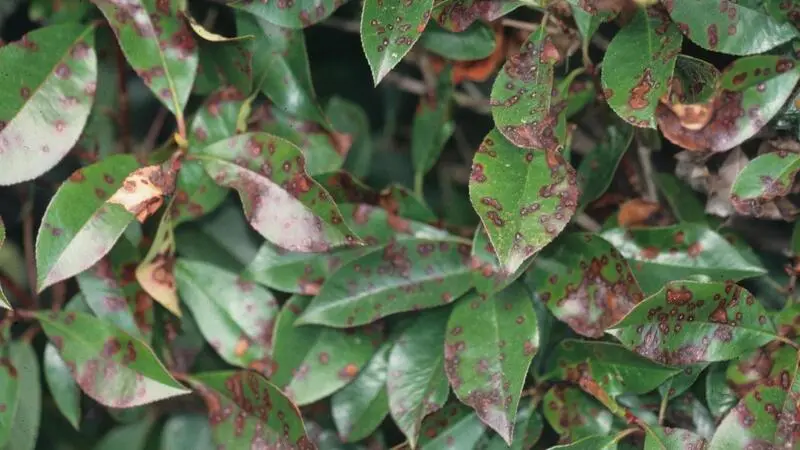Did you know that nearly 30% of gardeners report issues with their Photinia Red Robin plants? Photinia Red Robin, known for its vibrant foliage and striking appearance, is a popular choice among gardeners and landscapers. However, like any plant, it can face various challenges that hinder its growth and aesthetic appeal. From pests to environmental stress, these common problems can diminish the vibrant beauty of this popular shrub, turning your garden’s crown jewel into a source of frustration. According to recent surveys, up to 40% of Photinia plants suffer from leaf spot diseases, while over 25% are impacted by pest infestations like aphids and spider mites. These statistics highlight the importance of understanding and addressing Photinia Red Robin problems to maintain healthy and attractive plants.
In this article, we will delve into the common Photinia Red Robin problems associated with this beautiful shrub and provide effective solutions to ensure your plants thrive.
Understanding Photinia Red Robin
Before addressing specific problems, it’s essential to understand what makes Photinia Red Robin special. This evergreen shrub is known for its stunning red leaves that mature into a glossy green, creating a striking visual contrast in any garden. Growing up to 3 to 4 meters tall, it is commonly used for hedging or as a specimen plant. Its adaptability to various soil types and preference for full sun to partial shade make it a popular choice among gardeners.
Despite its beauty, Photinia Red Robin can face several challenges. Common pests such as aphids and spider mites can damage the foliage, while diseases like leaf spots can lead to unsightly marks and leaf drops. Additionally, environmental factors such as drought or frost can stress the plant. Understanding these potential issues is vital for maintaining the health and attractiveness of your Photinia Red Robin, ensuring it remains a vibrant feature in your landscape.
Common Photinia Red Robin Problems
1. Leaf Spot Disease
Leaf spot disease is one of the most prevalent issues faced by Photinia Red Robin. This fungal infection typically manifests as small, dark spots on the leaves, which can expand and cause premature leaf drop.
Solutions:
- Improve Air Circulation: Ensure that your plants are spaced adequately to allow air to circulate freely. This helps reduce humidity, which is conducive to fungal growth.
- Fungicides: If leaf spot disease is severe, consider applying a fungicide specifically formulated for ornamental plants. Follow the manufacturer’s instructions for application rates and timings.
- Prune Affected Leaves: Regularly inspect your plants and remove any leaves showing signs of infection to prevent the spread of the disease.
2. Pest Infestations
Pests such as aphids, scale, and red spider mites can significantly impact the health of your Photinia Red Robin. These pests feed on the plant’s sap, leading to weakened growth and aesthetic damage.
Solutions:
- Insecticidal Soap: Apply insecticidal soap to affected areas, as it effectively suffocates pests without harming the plant.
- Neem Oil: This natural pesticide can deter many common pests. Mix according to the instructions and spray on affected foliage, ensuring to cover the undersides of leaves where pests often hide.
- Regular Monitoring: Keep a close eye on your plants, especially during the growing season, and take action at the first sign of pest activity.
3. Poor Soil Conditions
Photinia Red Robin thrives in well-draining soil rich in organic matter. Poor soil conditions can lead to nutrient deficiencies, stunted growth, and increased susceptibility to diseases.
Solutions:
- Soil Testing: Conduct a soil test to determine pH and nutrient levels. Photinia prefers a slightly acidic to neutral pH (6.0-7.0).
- Amend the Soil: Incorporate organic matter such as compost or well-rotted manure to enhance soil fertility and drainage.
- Mulching: Apply a layer of organic mulch around the base of the plant to retain moisture, suppress weeds, and improve soil structure over time.
4. Environmental Stress
Environmental factors such as drought, extreme temperatures, and strong winds can stress Photinia Red Robin, leading to issues like leaf scorch or dieback.
Solutions:
- Watering Practices: During dry spells, ensure consistent watering. Photinia requires regular moisture, especially when newly planted. A deep watering once a week is often more beneficial than frequent shallow watering.
- Protective Barriers: Use windbreaks or plants in sheltered locations to protect your Photinia from harsh winds.
- Frost Protection: In colder climates, cover your plants with frost cloth during extreme weather to shield them from frost damage.
5. Nutrient Deficiencies
Photinia Red Robin may suffer from nutrient deficiencies, particularly nitrogen, leading to yellowing leaves and poor growth.
Solutions:
- Fertilise Appropriately: Use a balanced fertilizer in spring to provide essential nutrients. A slow-release fertilizer can help maintain nutrient levels throughout the growing season.
- Organic Options: Consider organic fertilizers like fish emulsion or blood meal, which are excellent sources of nitrogen and beneficial microorganisms for soil health.
- Regular Monitoring: Observe your plants regularly for signs of nutrient deficiencies, such as stunted growth or leaf yellowing, and adjust your fertilization program accordingly.
Preventative Measures for Thriving Photinia Red Robin
To ensure your Photinia Red Robin remains healthy and vibrant, consider these preventative measures:
1. Regular Pruning
Regularly pruning your Photinia encourages healthy growth and improves air circulation. Remove dead or diseased wood and shape the plant to promote a fuller appearance.
2. Optimal Planting Conditions
Choose a suitable location for planting that provides partial to full sunlight and has well-draining soil. This will create a conducive environment for growth.
3. Disease and Pest Monitoring
Implement a routine monitoring system to check for pests and diseases. Early detection is key to preventing significant damage to your plants.
4. Seasonal Care
Adapt your care routine to the changing seasons. During winter, protect against frost, and in summer, ensure adequate watering during dry spells.
Conclusion
Photinia Red Robin is a beautiful addition to any garden, but it requires attention to thrive. By understanding and addressing common Photinia Red Robin problems, gardeners can enjoy vibrant and healthy plants year-round. Implementing proper care strategies, including monitoring for pests and diseases, providing adequate nutrients, and ensuring optimal planting conditions, will significantly enhance the health and beauty of your Photinia Red Robin.


1djitw
10vuhn